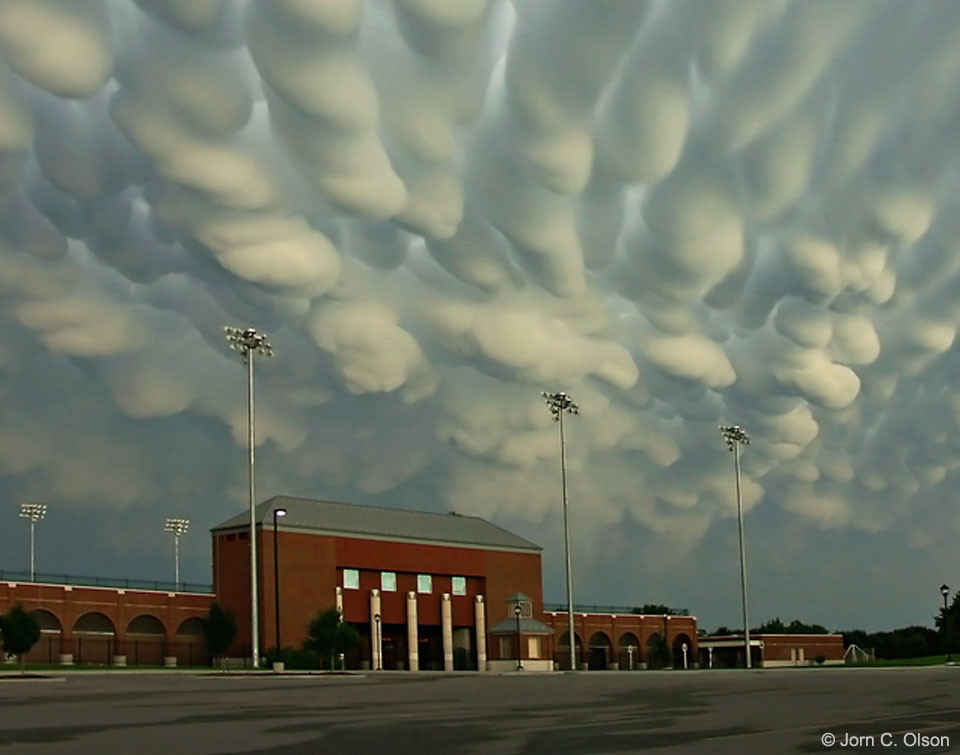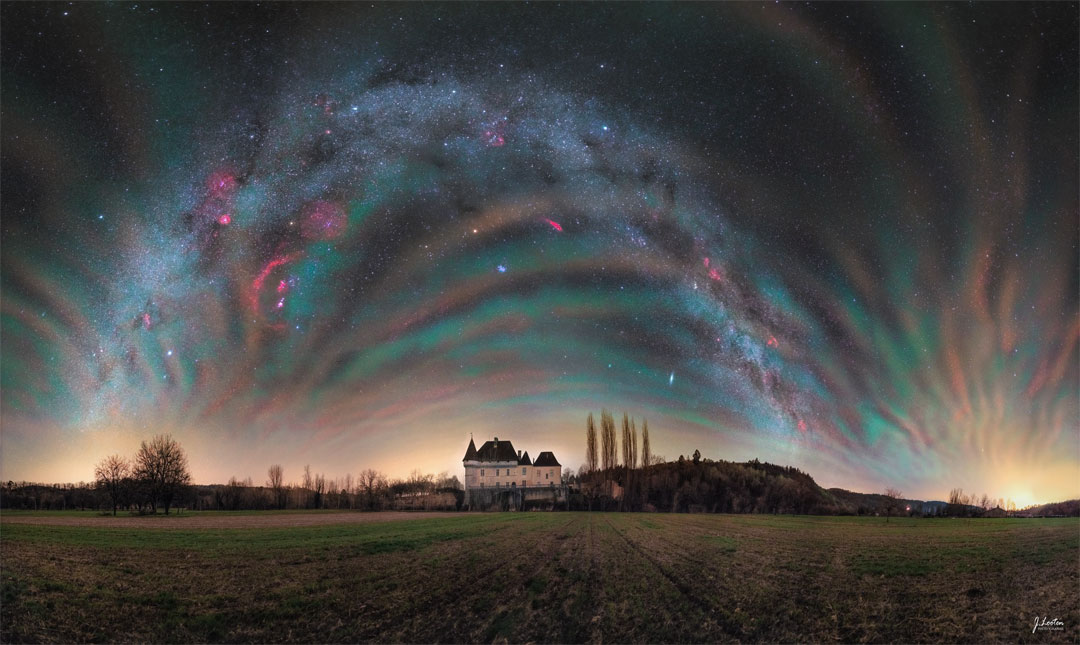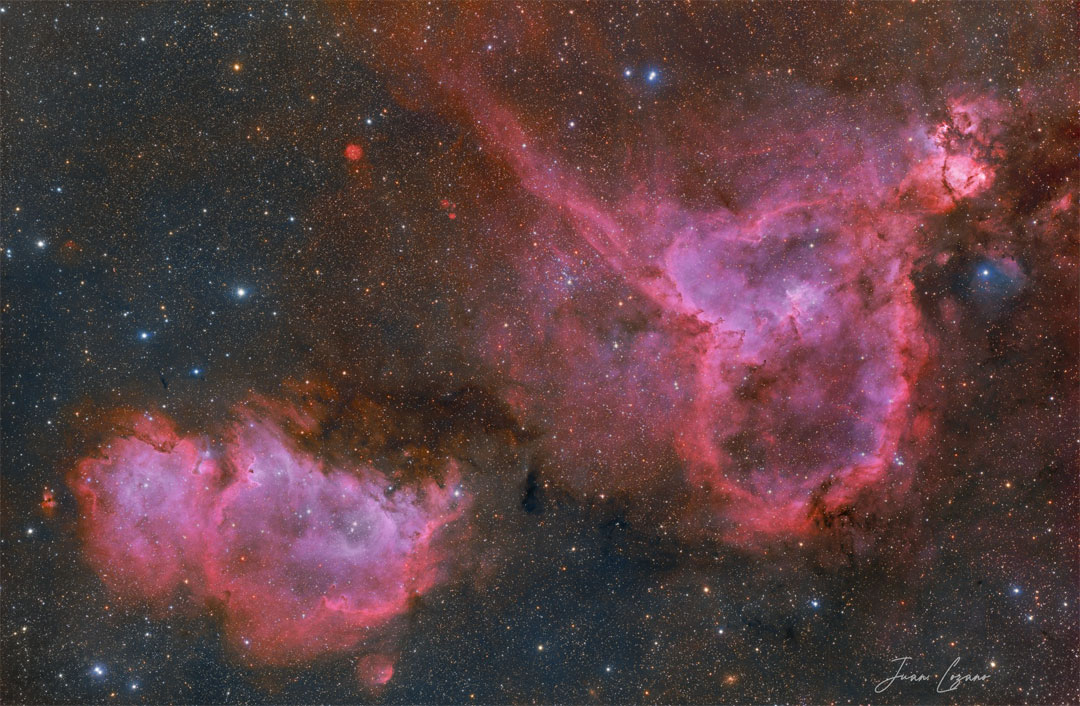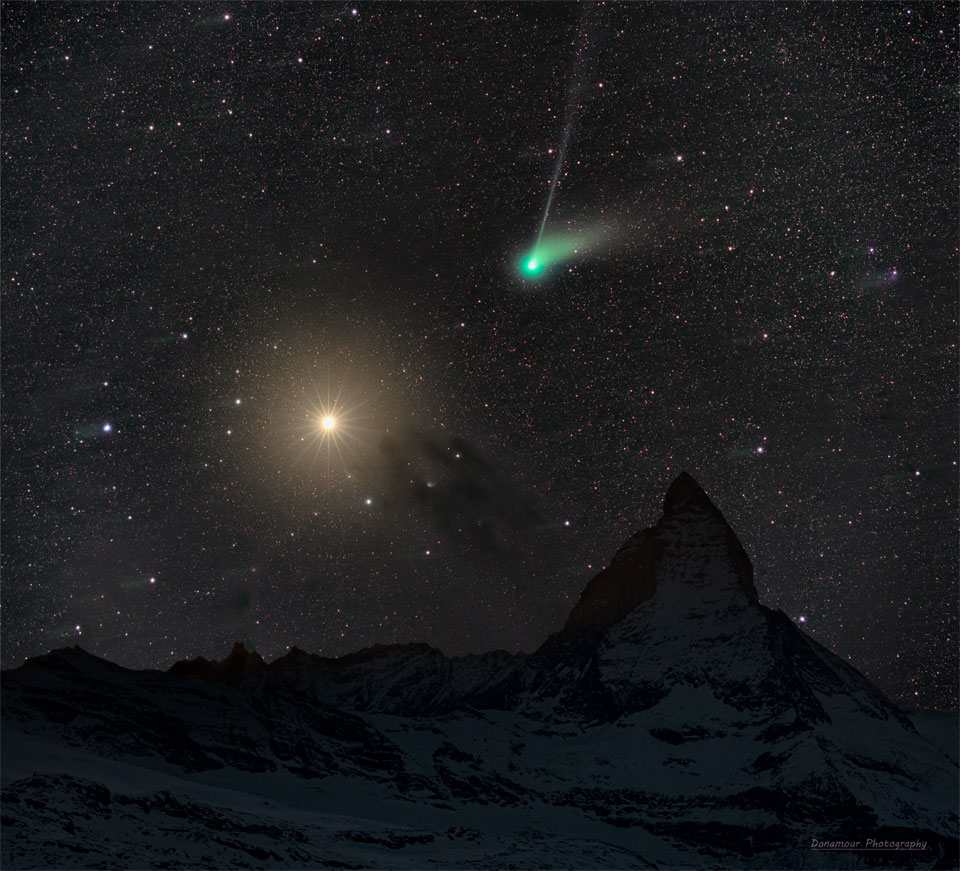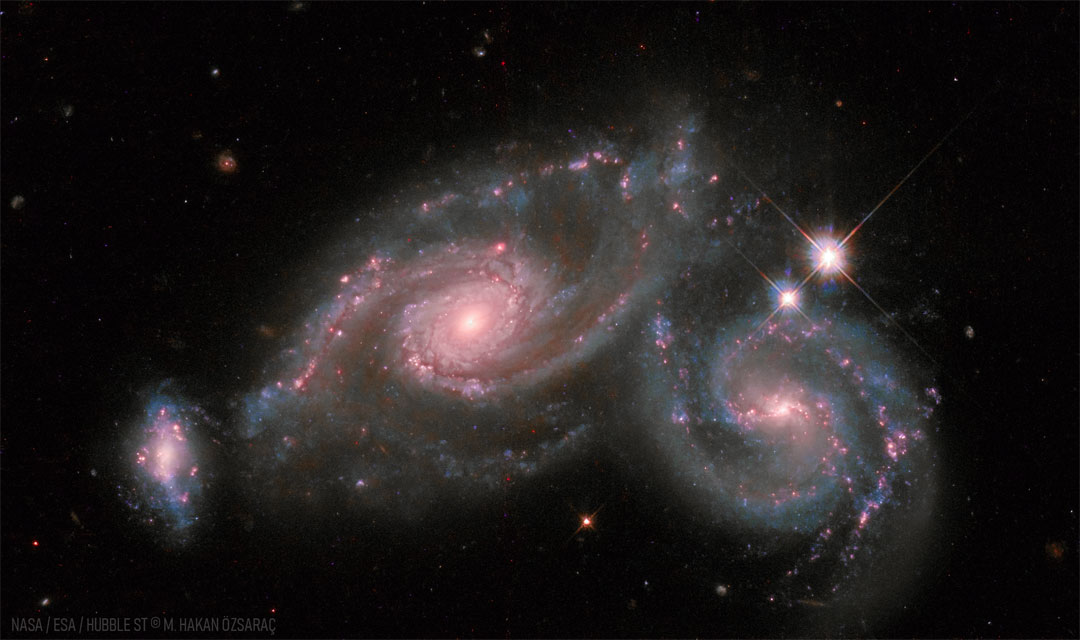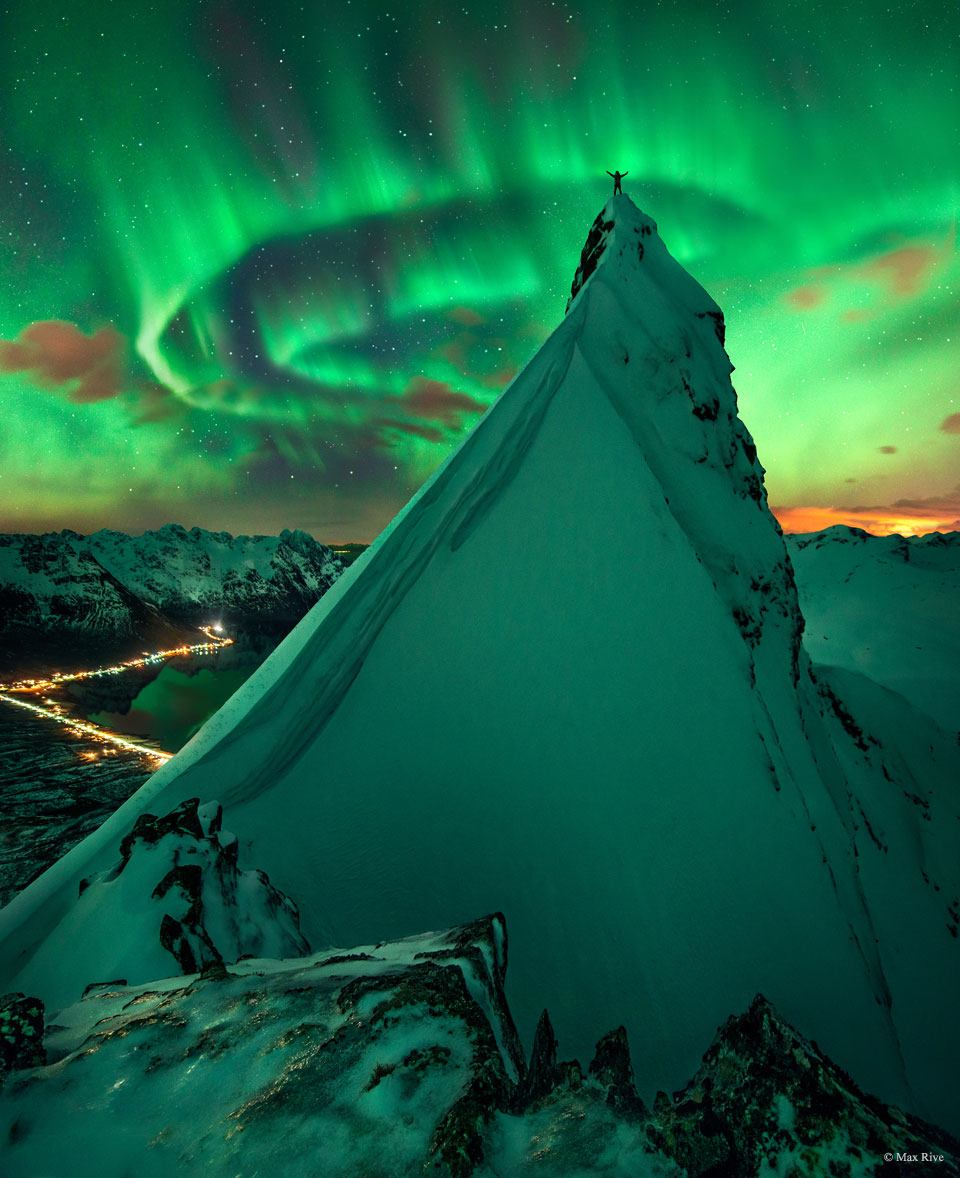Nombre total de pages vues
16/02/2023
SANTé - DELICIEUSES HERBES AROMATIQUES - La menthe
ASTRONOMY - Mammatus Clouds over Nebraska
2023 February 12
Image Credit & Copyright: Jorn Olsen Photography
Explanation: When do cloud bottoms appear like bubbles? Normally, cloud bottoms are flat. This is because moist warm air that rises and cools will condense into water droplets at a specific temperature, which usually corresponds to a very specific height. As water droplets grow, an opaque cloud forms. Under some conditions, however, cloud pockets can develop that contain large droplets of water or ice that fall into clear air as they evaporate. Such pockets may occur in turbulent air near a thunderstorm. Resulting mammatus clouds can appear especially dramatic if sunlit from the side. The mammatus clouds pictured here were photographed over Hastings, Nebraska during 2004 June.
15/02/2023
ASTRONOMY - Airglow Sky over France
2023 February 15
Image Credit & Copyright: Julien Looten
Explanation: This unusual sky was both familiar and unfamiliar. The photographer's mission was to capture the arch of the familiar central band of our Milky Way Galaxy over a picturesque medieval manor. The surprise was that on this January evening, the foreground sky was found glowing in a beautiful but unfamiliar manner. The striped bands are called airglow and they result from air high in Earth's atmosphere being excited by the Sun's light and emitting a faint light of its own. The bands cross the entire sky -- their curved appearance is due to the extremely wide angle of the camera lens. In the foreground lies Château de Losse in southwest France. Other familiar sky delights dot the distant background including the bright white star Sirius, the orange planet Mars, the blue Pleiades star cluster, the red California Nebula, and, on the far right, the extended Andromeda Galaxy. The initial mission was also successful: across the top of the frame is the arching band of our Milky Way.
14/02/2023
SANTé - DELICIEUSES HERBES AROMATIQUES - Le fenouil
ASTRONOMY - The Heart and Soul Nebulas
2023 February 14
Image Credit & Copyright: Juan Lozano de Haro
Explanation: Is the heart and soul of our Galaxy located in Cassiopeia? Possibly not, but that is where two bright emission nebulas nicknamed Heart and Soul can be found. The Heart Nebula, officially dubbed IC 1805 and visible in the featured image on the upper right, has a shape reminiscent of a classical heart symbol. The shape is perhaps fitting for Valentine's Day. The Soul Nebula is officially designated IC 1871 and is visible on the lower left. Both nebulas shine brightly in the red light of energized hydrogen, one of three colors shown in this three-color montage. Light takes about 6,000 years to reach us from these nebulas, which together span roughly 300 light years. Studies of stars and clusters like those found in the Heart and Soul nebulas have focused on how massive stars form and how they affect their environment.
13/02/2023
ASTRONOMY - Comet ZTF and Mars
2023 February 13
Image Credit & Copyright: Donato Lioce
Explanation: No, Comet ZTF is not going to hit Mars. Nicknamed the Green Comet for its bright green coma, C/2022 E3 (ZTF) did, however, pass almost in front of the much-more distant planet a few days ago, very near in time to when the featured picture was taken. The two sky icons were here captured behind a famous Earth icon -- the Matterhorn, a mountain in the Italian Alps with a picturesque peak. Both the foreground and background images were taken on the same evening by the same camera and from the same location. The comet's white dust tail is visible to the right of the green coma, while the light blue ion tail trails towards the top of the image. Orange Mars is well in front of the numerous background stars as well as the dark nebula Barnard 22 to its lower right. Although Mars remains visible in the evening sky for the next few months, Comet ZTF has already begun to fade as it returns to the outer Solar System.
08/02/2023
ASTRONOMY - Stellar Wind-Shaped Nebula RCW 58
2023 February 8
Image Credit & Copyright: Mike Selby & Mark Hanson; Text: Natalia Lewandowska (SUNY Oswego)
Explanation: Imagine traveling to a star about 100 times as massive as our Sun, a million times more luminous, and with 30 times the surface temperature. Such stars exist, and some are known as Wolf Rayet (WR) stars, named after French astronomers Charles Wolf and Georges Rayet. The central star in this image is WR 40 which is located toward the constellation of Carina. Stars like WR 40 live fast and die young in comparison with the Sun. They quickly exhaust their core hydrogen supply, move on to fusing heavier core elements, and expand while ejecting their outer layers via high stellar winds. In this case, the central star WR 40 ejects the atmosphere at a speed of nearly 100 kilometers per second, and these outer layers have become the expanding oval-shaped nebula RCW 58.
23/01/2023
ASTRONOMY - The Colliding Spiral Galaxies of Arp 274
2023 January 23
Image Credit: NASA, ESA, Hubble; Processing & Copyright: Mehmet Hakan Özsaraç
22/01/2023
MERVEILLEUX MONDE SOUS-MARIN - Canyon de Zhemchug - Mer de Béring (océan Pacifique)

Crédit photo: Capture d’écran – BBC
ASTRONOMY - In Green Company: Aurora over Norway
2023 January 22
Image Credit & Copyright: Max Rive
Explanation: Raise your arms if you see an aurora. With those instructions, two nights went by with, well, clouds -- mostly. On the third night of returning to same peaks, though, the sky not only cleared up but lit up with a spectacular auroral display. Arms went high in the air, patience and experience paid off, and the creative featured image was captured as a composite from three separate exposures. The setting is a summit of the Austnesfjorden fjord close to the town of Svolvear on the Lofoten islands in northern Norway. The time was early 2014. Although our Sun passed the solar minimum of its 11-year cycle only a few years ago, surface activity is picking up and already triggering more spectacular auroras here on Earth.
ASTRONOMY - The Surface of Titan from Huygens
2025 November 30 The Surface of Titan from Huygens Image Credit: ESA , NASA , JPL , U. Arizona , Huygens Lander Explanation: If you c...

-
2022 September 26 All the Water on Planet Earth Illustration Credit: Jack Cook, Adam Nieman, Woods Hole Oceanographic Institution ; Data ...
-
2025 May 11 The Surface of Venus from Venera 14 Image Credit: Soviet Planetary Exploration Program , Venera 14 ; Processing & Copyri...

